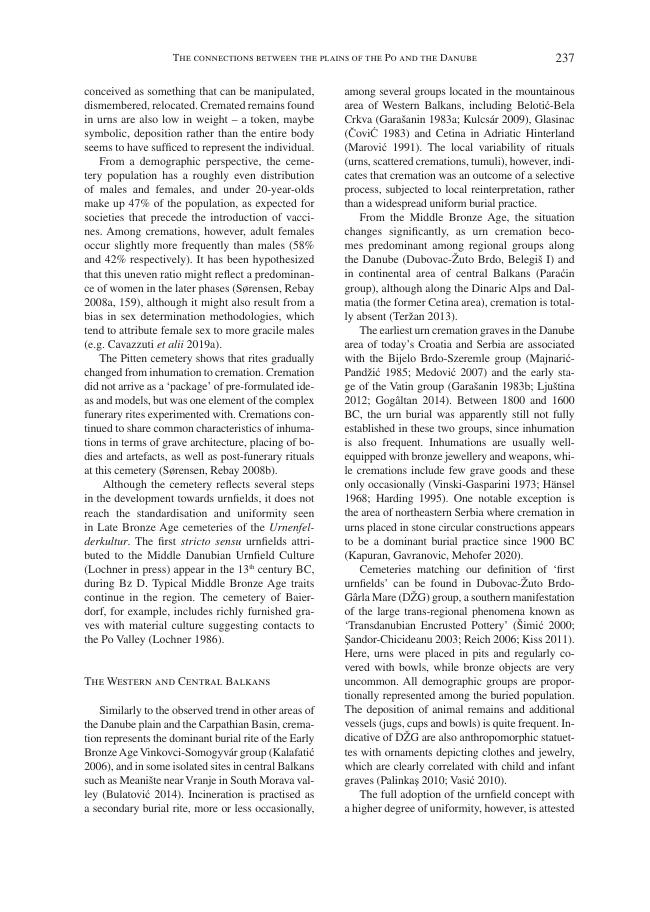The connections between the plains of the Po and the Danube during the Bronze Age seen through the spread of the Urnfield model
P. 231-243
The adoption of a new funerary ritual denotes an important change in society, although it can be difcult to identify the triggers. In the past, theories such as that of Luigi Pigorini on the origin of the Terramare culture, the concept of mass migration was used as the central explanation. In the 20th century, alternative approaches have emphasized the role of local developments and ideological change in response to ‘global' macro-trends. The massive introduction of urn cremation, which replaced the inhumation burial that prevailed in previous periods, marks the beginning of the Urnfield Period. Traditionally, this change has been dated to around 1300/1200 BC, the beginning of Bronze Age D/Hallstatt A1 (Bz D/Ha A1), in Central Europe.
In the light of recent archaeological research, however, it appears that the ‘urneld model', which originally developed within the territory of the tells in modern-day Hungary, was introduced during the 15th century BC (Bz B2/C) - at least one century before the ‘Urnenfelderzeit'- in several areas between the Danube and the Po plains. However, the archaeological record shows a wide spectrum of local attitudes towards the spreading novelty, ranging from radical acceptance, to hybridization and rejection. Our aim is to highlight this variability in Hungary, Lower Austria, western and central Balkans and to connect this evidence with the Terramare area. [Publisher's text]
Forma parte de
Rivista di scienze preistoriche : LXX, supplemento, 2020-
Artículos del mismo número (disponibles individualmente)
-
Información
Código DOI: 10.32097/1128
ISSN: 2282-457X



